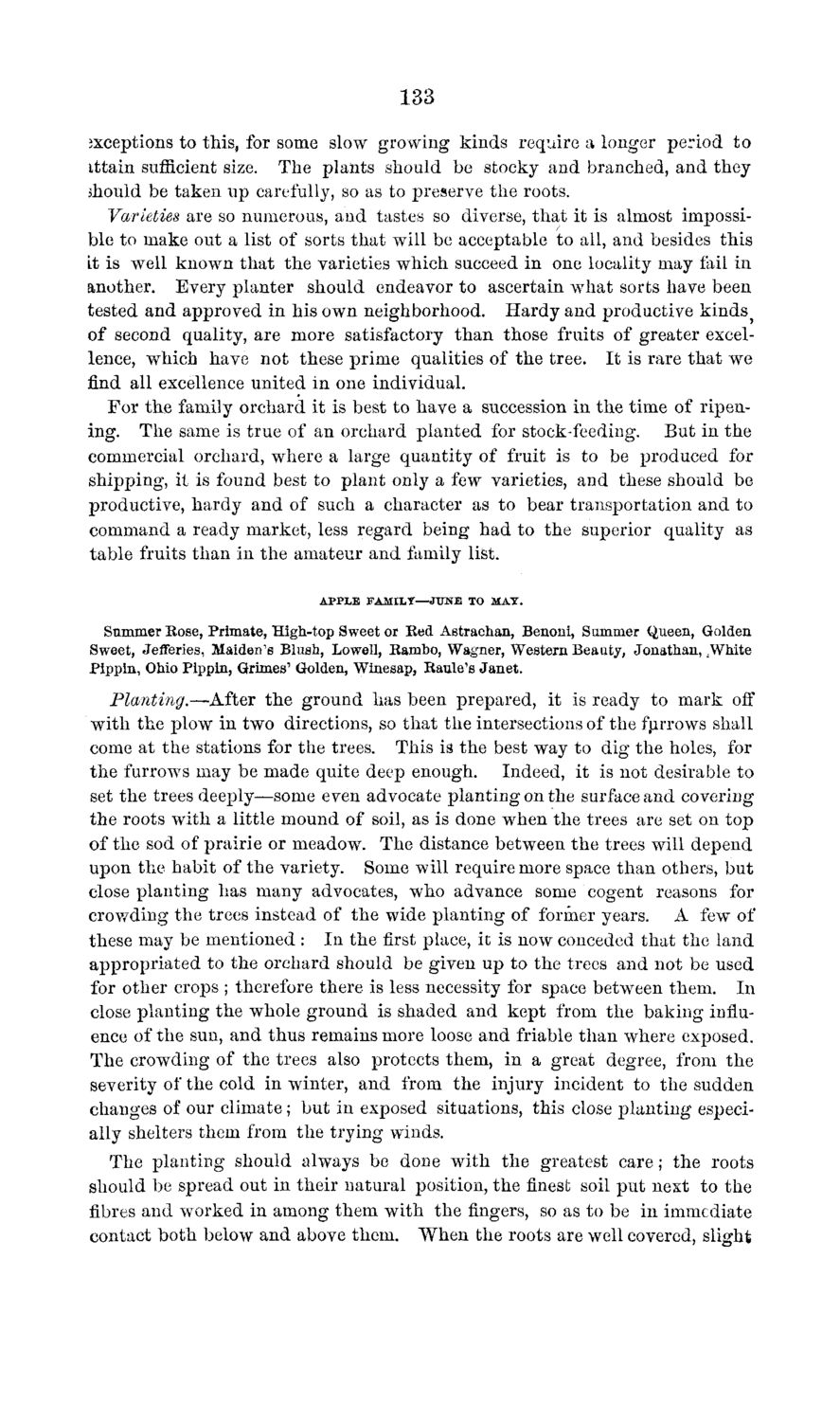| |
| |
Caption: Board of Trustees Minutes - 1869
This is a reduced-resolution page image for fast online browsing.

EXTRACTED TEXT FROM PAGE:
133 jxceptions to this, for some slow growing kinds require a longer period t o ittain sufficient size. The plants should be stocky and branched, and they should be taken up carefully, so as to preserve the roots. Varieties are so numerous, and tastes so diverse, that it is almost impossible to make out a list of sorts that will be acceptable to all, and besides this Lt is well known that the varieties which succeed in one locality may fail in another. Every planter should endeavor to ascertain what sorts have been tested and approved in his own neighborhood. Hardy and productive kinds of second quality, are more satisfactory than those fruits of greater excellence, which have not these prime qualities of the tree. It is rare that we find all excellence united in one individual. F o r the family orchard it is best to have a succession in the time of ripening. The same is true of an orchard planted for stock-feeding. But in the commercial orchard, where a large quantity of fruit is to be produced for shipping, it is found best to plant only a few varieties, and these should be productive, hardy and of such a character as to bear transportation and to command a ready market, less regard being had to the superior quality as table fruits than in the amateur and family list. APPLE FAMILY—-JUNE TO MAY. Summer Rose, Primate, High-top Sweet or Bed Astraehan, Benoiii, Summer Queen, Golden Sweet, Jefferies, Maiden's Blush, Lowell, Bambo, Wagner, Western Beauty, Jonathan, .White Pippin, Ohio Pippin, Grimes' Golden, Winesap, Raule's Janet. Planting.—After the ground has been prepared, it is ready to mark off with the plow in two directions, so that the intersections of the furrows shall come at the stations for the trees. This is the best way to dig the holes, for the furrows may be made quite deep enough. Indeed, it is not desirable to set the trees deeply—some even advocate planting on the surface and covering the roots with a little mound of soil, as is done when the trees are set on top of the sod of prairie or meadow. The distance between the trees will depend upon the habit of the variety. Some will require more space than others, but close planting has many advocates, who advance some cogent reasons for crowding the trees instead of the wide planting of former years. A few of these may be mentioned : In the first place, it is now conceded that the land appropriated to the orchard should be given up to the trees and not be used for other crops ; therefore there is less necessity for space between them. In close planting the whole ground is shaded and kept from the baking influence of the sun, and thus remains more loose and friable than where exposed. The crowding of the trees also protects them, in a great degree, from the severity of the cold in winter, and from the injury incident to the sudden changes of our climate; but in exposed situations, this close planting especially shelters them from the trying winds. The planting should always be done with the greatest care; the roots should be spread out in their natural position, the finest soil put next to the fibres and worked in among them with the fingers, so as to be in immediate contact both below and above them. When the roots are well covered, slight
| |